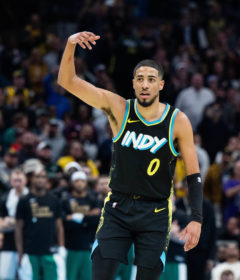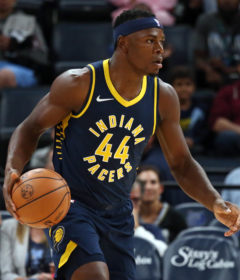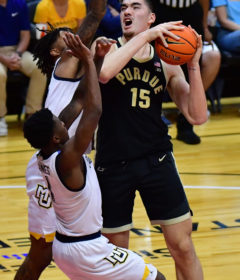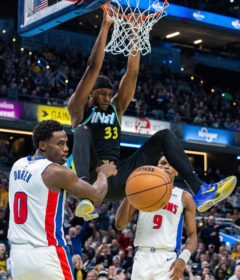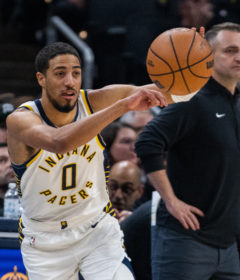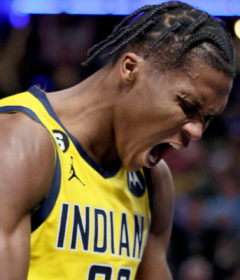Hoosiers year in review: Brilliant season fell short of goal
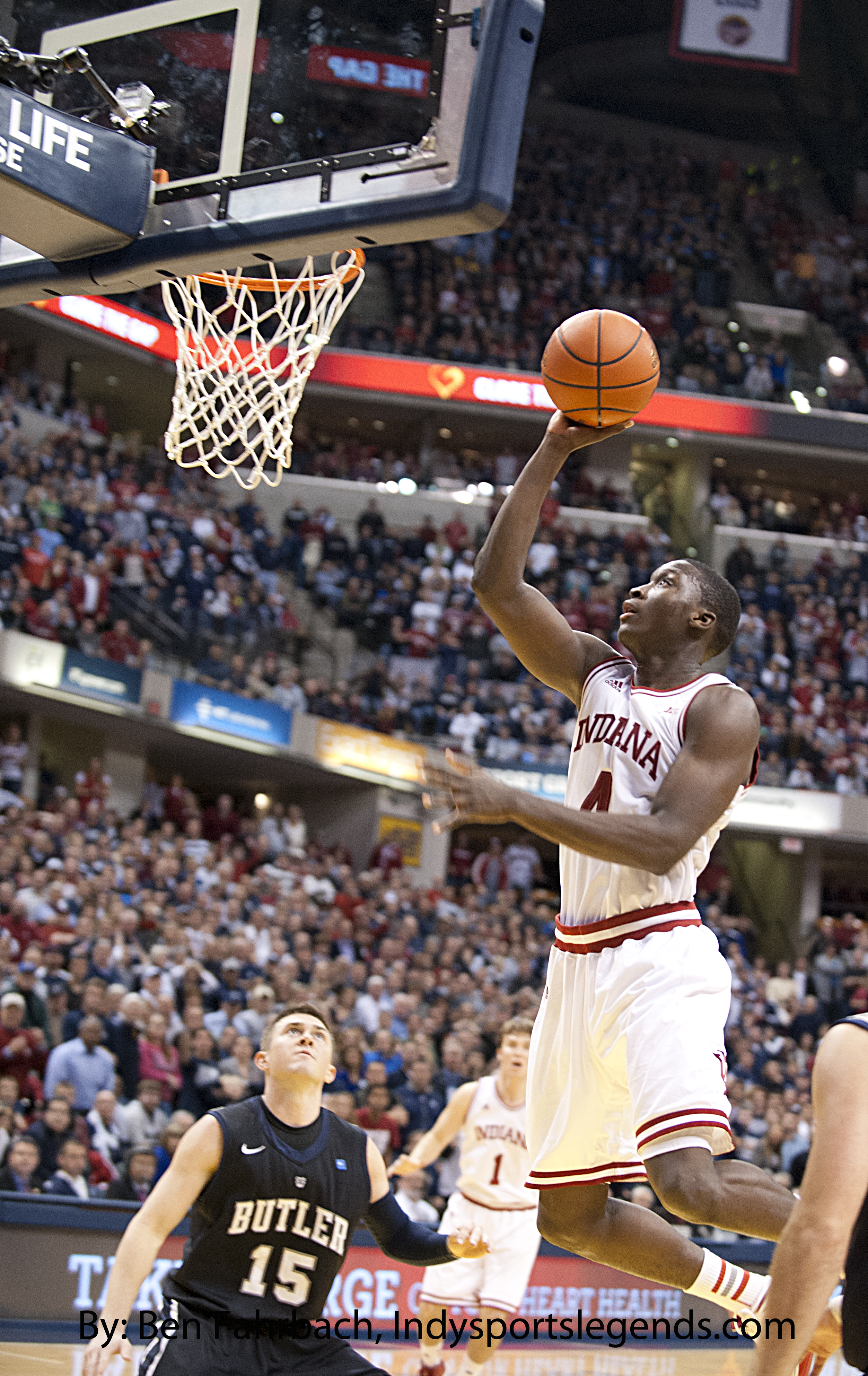
By CHRIS GOFF
ISL Correspondent
As the Hoosiers finish spring semester classes, prepare to say their goodbyes to three impactful seniors and chart offseason workouts at Cook Hall, two incredibly dissimilar views emerge as a program begins to reflect on a season that concluded sooner than expected.
In one view, the season was a grand success. The Hoosiers overcame a ridiculously talented league and the inexperience of a freshman point guard to win 29 games, finish as a No. 1 seed in both the NCAA and Big Ten tournaments and seize an outright regular-season conference title for the first time since 1993.
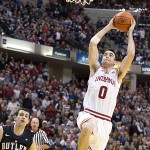
Teams have faltered under lesser expectations and, if nothing else, the winning culture the Hoosiers established should only benefit them in years to come.
In a second view, the season was a major disappointment. The Hoosiers teased and enticed fans, before ultimately crushing their hopes and dreams, losing in the exact fashion they did last season – in the Sweet 16 of the Big Dance.
So which outlook is more appropriate? So many elements of truth lie in each that people around the team seem torn on whether 2012-13 was a job well done or a job left unfinished, a pleasant memory or a discouraging reminder of what could have been.
“Our minds are around closure,” coach Tom Crean said. “We call it a great year. That’s how I view it. We have to look at it that way. I hope at some point in time the guys on this team will remember that they did things that hadn’t been done in 20 years at Indiana. We just couldn’t get over the hump.”
A number of questions loom over the program as it enters an offseason of transition. Will Cody Zeller and Victor Oladipo, the team’s best players, forego their remaining years of eligibility to enter the NBA draft as underclassmen? How will Indiana resolve a scholarship situation that sees a minimum of 14 candidates – 16 if Oladipo and Zeller stay – for only 13 slots? What can Hanner Mosquera-Perea and Jeremy Hollowell do to improve in the wake of inconsistent and uninspiring debut seasons? Could next season’s starting lineup include three freshmen? Uncertainty is the norm.
The onus will be on Crean and his assistants to develop a roster that will be loaded with young big men and in need of better, more versatile guard play. The months ahead will offer insight as Crean steers the program through its first major personnel changes since returning to prominence. Whether Indiana can maintain a high level of play is a question for another day. In the wake of last Thursday’s lopsided loss to Syracuse, most of the attention remains on finding perspective rather than looking ahead.
The Hoosiers entered practice in October as a contender in the Big Ten, then were ranked No. 1 in the Associated Press’ preseason Top 25, a team fielding a variety of talents, improving defense and tight-knit camaraderie. This was supposed to be the season the Hoosiers rekindled their glory days, buried their post-Bob Knight foibles and returned to Final Four dominance.
But, in a surprising development, the offense went south at the worst possible time. Season lows in points, field-goal percentage and turnover ratio plagued Indiana in the 61-50 loss to the Orange. Jordan Hulls shot 26.5 percent from the field in eight games in March. And the Hoosiers went 5-4 in their final nine games, which includes a miraculous comeback in the final minute at Michigan.
Zeller, once discussed as a No. 1 overall draft pick, spun his tires, making a sophomore leap in defense and rebounding but failing to shine in the postseason or progress on offense. Yogi Ferrell, in the first season of what projects to be a four-year career, was useless under the bright lights, going scoreless against Temple and Syracuse. Oladipo, who gave the school a first-team AP All-American for the first time since 2000, produced no 20-point games in his final 12.
On March 29, the Hoosiers were stunned when they boarded that red-eye flight in Washington, D.C. and traveled home. They had advanced to back-to-back Sweet 16 appearances for the first time since 1994, tremendously proud of a 14-4 record in a grueling Big Ten conference that featured road wins at powerhouses Michigan State and Ohio State. And yet the school’s national title drought still grew to 26 years and counting.
Still, the Hoosiers did build on last season. They played some of the best defense seen in Bloomington in ages, holding opponents to 62.1 points per game, the seventh-best scoring defense in school history.
More than anyone, Oladipo flourished. Displaying a newfound shooting stroke, Oladipo set career highs in scoring (13.6 points per game), rebounding (6.3 boards) and assists (2.1), while shooting 60 percent from the field and 44 percent on 3-pointers. He led the Big Ten in steals (78) and won the conference’s defensive player of the year award.
Oladipo became the face of the season.
“That’s just Victor now,” Christian Watford said. “He brings a lot of energy. He’s part of our offense. He did a great job.”
In the positive side of the memory bank, the 2012-13 season will be remembered for two things above all else: The evolution of Oladipo into a bona-fide star and the 10 weeks Indiana spent at No. 1 in the AP poll. If Oladipo provided the most visual thrills through a cold winter, the national rankings were the validation of a program’s revival.
Oladipo’s mix of hustling and determination to improve was the pulsating heartbeat behind the Hoosiers finishing first in the Big Ten. And his seamless fit while playing alongside Zeller was tantalizing.
Let’s return to those two views. Will the season be remembered as one of accomplishment? Or for a pair of early tournament exits?
“I have no word for it,” said Oladipo, in a bad mood over the ending. “There’s no word in the dictionary that can describe it. I apologize to Hoosier Nation. I feel like we let them down.”
Hulls enjoys a lifetime viewpoint as a Bloomington native, and he says he will look at the bright side of a season much, much better than his 10-win freshman campaign.
“We’re definitely not satisfied with what we got this year,” Hulls said, “but we don’t want to take away from what we did accomplish. It was a great basketball season. We’re proud.”
Zeller shared the glass-half-full perspective.
“The success that we had this year, winning the Big Ten, the best conference in the country, back-to-back Sweet 16s, we’ve come a long way,” Zeller said. “This will be remembered for a long time.”
GRADING THE HOOSIERS
Victor Oladipo, SF – A+
Oladipo was phenomenal all year on both ends of the floor, even playing through a badly sprained ankle at Michigan State. His jump shot improved drastically this season, and his draft stock soared from second round to lottery to top five. If Oladipo somehow returned next season for the Hoosiers, the team would be ecstatic. Oladipo said the presence of Cody Zeller made it all possible, but Oladipo was the team’s glue and top perimeter scorer, on top of being a sensational defender. Indiana recruiters could search coast to coast for decades before they found another Oladipo, a charismatic uber-athlete who made several great plays in clutch situations.
Cody Zeller, C – A
Tom Crean repeatedly defended Zeller against criticism and he was right. So Zeller wasn’t MVP of the universe. The 7-footer was still one of the top three or four big men in the sport as a sophomore. He anchored a good defense. If he comes back to school, Zeller will work hard in the offseason and learn from his experiences and get better.
Christian Watford, PF – B+
The senior was a solid third offensive option, shooting 48 percent on 3-pointers and a team-high 81 percent from the foul line. He never became a better offensive post player, but his defense reached new heights. Watford played some of his best ball on the road and against conference opponents, exactly what one would expect of a four-year contributor. He had a string of 17 consecutive double-figure scoring nights in the middle of the season, the longest stretch of his career and a repulsion of previous consistency issues. In short, Watford almost always did the job the Hoosiers needed from him. Whether that results in an NBA contract remains to be seen.
Jordan Hulls, SG – B
There wasn’t a more disappointing player on the Hoosiers’ roster in the postseason. Hulls scored six points in two Big Ten tournament games, then 15 in three NCAA tournament contests (10 of which came against No. 16 seed James Madison). After a 17-point outing against Minnesota on Feb. 26, Hulls simply didn’t perform. To be fair, he also got hurt late in the year and appeared to alter his delivery at the end of the season. He was also the team’s worst defender. But considering his career 44-percent 3-point mark, there is no way the Hoosiers will be able to replace him. He held a special place in the hearts of the Bloomington fan base and was at times a very good passer. Crean pushes his NBA potential, but that’s highly unlikely.
Will Sheehey, SF/SG – B-minus
The emotional junior played as one of the better backups in college basketball. As long as he becomes more consistent and continues to improve his dribble, Sheehey will be a more central asset next season. He’s a solid outside shooter who moves well without the ball and dunks emphatically. He averaged about 10 points per game. He scored a career-high 22 points against Purdue but didn’t play well in the month of January or in some of Indiana’s biggest regular season games. His postseason was OK.
Yogi Ferrell, PG – C+
Ferrell started all season as a freshman floor general. He was solid, but was not yet good enough to be the starting point guard on a team that wins the title. The tiny Indianapolis product ended on a sour note, playing extremely poorly in the final two games against Temple and Syracuse. Ferrell should be a great fit in Crean’s system next season now that he’s more experienced with it.
Remy Abell, PG – C
The second-year guard was one of only two reserves Crean really trusted. He could start for a lot of schools around the country because of his size and how good he is defensively. Abell will work on cutting his turnover rate in the offseason. His offensive game has a long way to go. Abell played well in the Big Ten tournament but was otherwise a non-factor after the beginning of conference play.
Jeremy Hollowell, PF – C
Hollowell had an up-and-down year. If he works on his post moves all summer there is a mild chance he will be the Hoosiers’ starting power forward next season. Unless Zeller returns and incoming McDonald’s All-American Noah Vonleh is just too good. Regardless, Hollowell showed flashes but never had that one breakout game to force Crean to allot him consistent minutes.
Hanner Mosquera-Perea, PF/C – C-minus
The nine-game suspension at the start of the season put him several steps behind, and the wiry freshman was too raw mentally and physically to be effective against Big Ten bruisers. The 6-foot-8 Colombian will face a lot of competition next fall, but his defensive potential is limitless and Crean said last month that he still believes Mosquera-Perea will be a great player at Indiana. His first season was uneventful because he made five shots and only played 114 minutes.
Maurice Creek, SG – C-minus
After struggling incessantly with injuries in past seasons, Creek at least played in 24 games. His shot was off most of the year and the coaching staff used him sporadically. Creek didn’t play in three of the final six games. His best performance was a nine-point outing against Ball State in November. Creek has a year of eligibility remaining but his days as a meaningful contributor appear to be over.
Derek Elston, PF/C – C-minus
People tend to wonder why Crean didn’t play him more given his past production and veteran presence. But every time Crean called Elston’s number, the return was iffy. Coming off knee surgery, Elston posted a player efficiency rating of 6.1, far below the minimum mark of 15.1 he posted in each of his first three seasons.
Austin Etherington, F – Incomplete
Never got a chance to prove himself after fracturing the patella in his left knee in Indiana’s ninth game. The sophomore had taken just seven shots up to that point. What he might offer the team is a bit of an unknown factor.
Peter Jurkin, C – Incomplete
Buried on the bench, the 7-footer was not ready for prime time. It’s doubtful he ever becomes much, but he should at least be a solution against an opponent of excessive size. He’s really raw offensively, and in three appearances, proved his hands aren’t very good.

